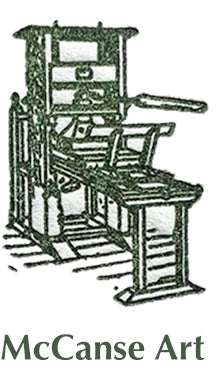Frederick Bourchier Taylor
Frederick Bourchier Taylor (1906-1987) was born in Ottawa to a family that was—and would remain— well-established in Canadian commerce and military. When Taylor was about ten years old, his father’s work in the Canadian Army brought his family to London, England, where Taylor completed his high school education at Lisgar Collegiate. Here, Taylor proved himself to be a man of many talents, excelling in his studies as well as in a variety of sports that included boxing, but Taylor’s chief interest was in art. However, his parents insisted Taylor get himself a practical degree before pursuing any artistic ambitions, and in 1925 Tayor returned to Canada to study architecture at McGill University in Montreal.

Taylor’s success followed him into university; he earned himself the Governor General’s award for highest academic standing and a scholarship in the field in the same year that he won the university’s title for heavyweight boxing champion. But soon after completing his degree Taylor returned to London to study painting and engraving at Goldsmith College, London Central School of Arts and Crafts, and the Byam Shaw School of painting. Taylor found art rather than architecture to be his calling, and following his studies in Europe, Taylor returned to McGill by the end of the 1930s to take up a professorship position teaching drawing and modelling.
Taylor grew more serious about his art, working more often in drypoint, engraving, and aquatint. Taylor’s work often depicted urban scenes, including street views and public buildings primarily in Ottawa and Quebec. But Taylor became increasingly interested in industrialism, particularly the workers and labourers employed at factories and the like across Quebec and Ontario.

The outbreak of the war in 1939 saw a change in Taylor that affected not only his artwork but his politics, much to the dismay of his family, which included his brother, Canadian millionaire E.P. Taylor. Frederick was fascinated with the war effort as he saw it unfolding on home soil, particularly in how it affected Canadian labourers; Taylor had an idea to document Canada’s war industrialism, a project that he had greater ambitions for than what Taylor felt he could manage on his own, and he began a campaign to persuade the government to fund an art project entirely focused on depicting Canadian labourers working for the war effort at home. Taylor wanted to ensure there was a “painted record” of this particular moment in Canadian industrialism, and moreover he felt the project would spur patriotism in his fellow citizens. Although Taylor was ultimately unsuccessful in his endeavor, his interest in documenting Canadian working class would define much of his work to come.
Meanwhile, his brother E.P. Taylor had become involved with the war effort at another echelon; he was appointed by C.D. Howe to the executive committee of the Department of Munitions and Supply and later appointed by Winston Churchill to run the British Supply Council in North America. Throughout his service, E.P. was fostering connections with other Canadian businessmen, which would help him enormously in later years, propelling him to become one of the richest men in Canada in his time; in 1950, speaking of his position in Canadian industry, E.P. is stated to have said, ”I simply own the largest piece of the largest piece.”

Frederick’s politics saw a radical shift from that of his brother’s, and by the end of the war, Taylor’s beliefs had become increasingly Communist, putting Taylor in a difficult position: Taylor’s family did not share his beliefs or welcome this political shift, but even among the community that did share similar beliefs, Taylor—a man coming from a wealthy Anglo-Saxon background—was regarded with mistrust.
Taylor was a tireless artist, producing some 147 prints in twenty years (Gironnay). He produced his work in limited editions, even making his own frames for some pieces (Gironnay). In his later years in Mexico, Taylor became interested in silkscreening. Taylor died by suicide at the age of 88.
Despite his work drawing parallels with that of noted Canadian artist Leonard B. Hutchinson, Frederick B. Taylor is largely forgotten from Canadian art history, not mentioned in neither Russell Harper’s nor Dennis Reid’s authoritative texts on Canadian art history (Gironnay). Taylor’s work and life is often overshadowed by that of his brother’s, but his contributions and interest in Canadian war-time working class captured a particular and important moment in that history.

Written by Mina Ivosev.
Sources:
Sophie Gironnay. Frederick B. Taylor: Graveur Realiste Radical. Monographie et Catalogue Raisonne. Quebec: Bibliotheque Nationale du Quebec, 1996.
“Frederick Bourchier Taylor.” Library and Archives Canada Blog, 24 Feb. 2015.
Anne Newlands. “Frederick B. Taylor: Roberts Gallery.” Roberts Gallery | Toronto Art Gallery, 2007.
“Canadian Artist: Taylor, Frederick B.” War Museum.
“Fonds 63: Frederick Taylor.” McGill Archival Collections Catalogue.
